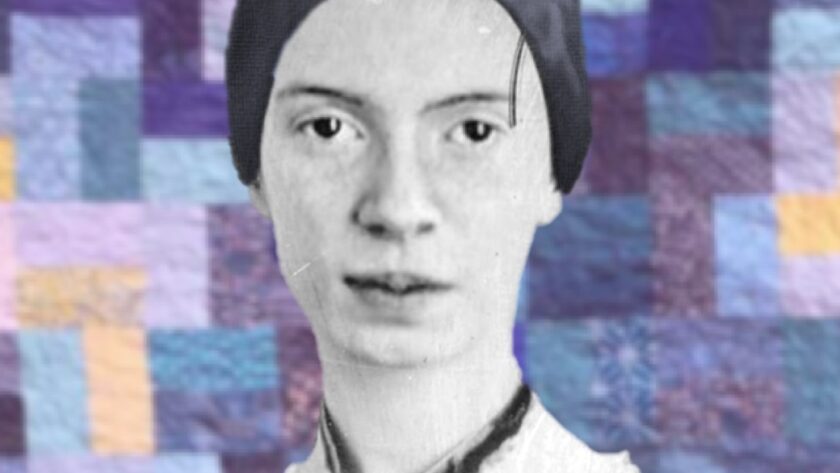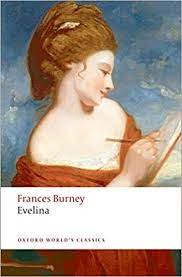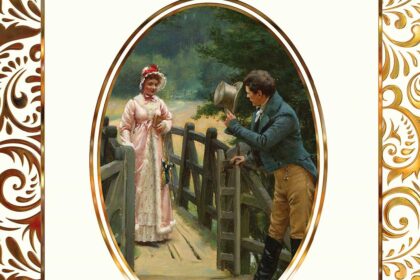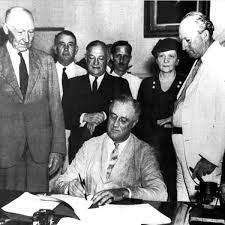I grew up in a church. From the day I was born until the day I left for college, each Sunday (with truly few exceptions) I could be found inside that space. I could be found with God – or rather, I could be found trying to get to him. I was raised on David and Goliath and the ten commandments and Adam and Eve and the seven cardinal sins. I read the bible cover to cover at age eleven, determined to impress my parents and as pretentious about literature as ever. I no longer believe in God, and in fact, I often wonder if I ever truly did. My faith was predetermined, expected. Only upon asserting my own spiritual agency in high school did I come to Agnosticism. I now harbor complicated, difficult emotions surrounding the church – and yet, when I sit down to write poetry, biblical allusions flow out of my pen as if involuntary. I find myself angry, asking myself the following question repeatedly: why am I constantly thinking about a God I don’t believe in? Through reading Emily Dickinson over the past few weeks, I may have found an answer. Critics and scholars often try to place Emily Dickinson on either side of a binary, either viewing her as a fervent believer or a fervent non-believer. Dickinson, I would argue, actually complicates and destabilizes this binary consistently, showing that although one may no longer hold true belief in the Christian deity, the formative childhood years centering around religion creates a worldview that is difficult to sever oneself from even in adulthood. A more apt description, then, is that Dickinson exists in the space between belief and unbelief – much like myself.
To prove this assertion of her existing in the space between, it is first essential to examine the arguments for the binary mode of thinking. The influence of religion on Dickinson’s personal life and poetic mode cannot be overstated. Dickinson, like myself, grew up in a devoutly religious family – her brother was a Calvinist preacher, her parents were members of Amherst’s First Congregational Church, and the Dickinsons held daily religious observances in their home. Her poetics, more importantly, are entirely informed by religion – both through employing the hymnal meter and through consistent biblical references.
Dickinson quite radically strayed from iambic pentameter, which had been the dominant poetic meter for centuries. Instead, she tended towards the hymnal meter of iambic trimeter or tetrameter as derived from Isaac Watts. Isaac Watts was a theological revolutionary, of sorts, as he ushered in an entirely new era of English worship through the recasting of biblical stories in hymns to be sung communally (of which he wrote over 700). He is credited with formalizing and popularizing the hymnal meter, which typically consists of quatrains rhyming either a-b-c-b or a-b-a-b and written in iambic trimeter and/or tetrameter, often alternating between the two. Some traditional churches were deeply offended by Watts’s work, viewing the human interpretation of the word of God as blasphemous, and in fact, many Calvinist churches would place hymns at the end of the service so that members of the congregation may choose to leave before their performance.
But a hundred years later and across an ocean, Dickinson’s church, Amherst’s First Congregational Church, embraced the hymnal tradition of Isaac Watts. The influence of this can be seen throughout much of Dickinson’s poetry, as the hymnal meter seems to define her poetic mode. The following stanza from “I taste a liquor never brewed,” for example, is in near perfect hymnal tradition – a quatrain rhyming a-b-c-b and alternating iambic trimeter with iambic tetrameter: “inebriate of air – am I – / And Debauchee of Dew – / Reeling – thro’ endless summer days – / From inns of molten Blue -” (Dickinson 96). When viewing Dickinson’s work in this light, her poems are frequently Christian hymns – maybe not in content, but certainly in form. The constant employment of hymnal meters indicates just how deeply religion informs her poetics.
The content of her work, too, could lead one to believe Dickinson a fervent believer, or at the very least a skeptic that leans towards belief. Dickinson, through her use of biblical imagery, diction, and allusions, illustrates that she still perceives and makes sense of the world through a lens of Christian faith. In “Safe in their Alabaster Chambers,” Dickinson is contemplating the dead in their tombs, and the speaker calls them “the meek members of the Resurrection,” indicating that they are awaiting the second coming of Christ (Dickinson 64). When considering mortality, Dickinson is thinking about Christ. This most profound and powerful association shows us a small glimpse into the authorial presence, and it is a presence that appears to us as a believer. Similarly, “These are the days when Birds come back” is seething with religious diction, using words such as sacrament, communion, sacred, partake, bread and wine, and consecrate (Dickinson 63). If we are to view words as tools with which one builds poetry, then a great deal of Dickinson’s tools are derived from the church. The diction that is available to Dickinson at this moment of building is religious, showing the deep penetration of Christian theology into her consciousness. Dickinson goes further in one poem, affirming the need for belief in stating that “Faith – is the Pierless Bridge / Supporting what We see / Unto the Scene that We do not,” indicating that even if not always, then at least at times, Dickinson feels a true need for religion (Dickinson 410). This employment of religious content illustrates that Dickinson, as some scholars like to believe, has not severed herself from religion. Religion is still in her, still affecting her, still informing and creating her worldview. When viewing Dickinson in this way, through looking at both form and content, it could be tempting to place Emily Dickinson on the belief side of this binary.
And yet, that assertion could be, and frequently is, quickly contradicted. For it is just as tempting, and just as fair, to identify Dickinson as a fervent nonbeliever – as she proclaimed herself. In order to become a full adult member of Amherst’s First Congregational Church, one was required to make a public profession of belief in Christ, and many of her friends and family members did this without hesitation. Dickinson, however, could not make the profession that was necessary, and never herself became a full member of the church. In her works, her complex and often agonizing relationship to both God and the church pour through, negating and questioning the Christian deity consistently.
The hymnal meter is certainly a valid argument for identifying Dickinson’s religious nature – but if one looks more closely, the way in which she employs this form may also be an argument for her resistance to Christian theology. As popularized by Isaac Watts, the hymnal meter and form was strict – with perfect rhymes, exact syllables, and unbroken regular iambic stressing. Consider this flawless stanza of Watts’s infamous “Joy to the World” hymn: “Joy to the earth, the Saviour reigns! / Let men their songs employ; / While fields and floods, rocks, hills and plains / Repeat the sounding joy.” As becomes immediately clear, this insistence on formal perfection in the Christian hymnal meter must be an argument for the flawless nature of God himself. Dickinson, though, consistently destabilizes this form, employing slant rhymes, breaking regular syllabic patterns after adhering to them, and altering the regular iambic stressing. In the first stanza of “I taste a liquor never brewed,” which is written in hymnal meter as previously discussed, dickinson rhymes “pearl” with “alcohol” – a radical slant rhyme that breaks this formal perfection. We, as readers, must view these choices not as laziness on the part of Dickinson (as we have seen that she is perfectly capable of following all formal constraints when she desires), but instead as an intentional alteration employed to make an argument. If Watts’s strict adherence to form argues for the perfection of Christian deities, what then, might Dickinson be saying about Christian theology through making a previously “perfect form” imperfect? Dickinson, through destabilizing this form even as she mastered it, argues that the Christian divinity may not be so perfect after all.
In the content of her poetic works, her skepticism about religion is made explicitly clear. In her poem “I shall know why – when Time is over -,” Dickinson expresses a deep, profound anger towards God. The speaker imagines her death as a time when her questions can finally be answered, and Christ will answer for every anguish the speaker has suffered. Allowing the anger to bubble to the surface, the final two lines read “I shall forget the drop of anguish / That scalds me now – that scalds me now!” (Dickinson 99). The speaker, and presumably Dickinson herself, does not want to have to die to know the answers. The speaker is agonized by the attempt to reconcile a perfect God with the anguish she sees all around her, showing a questioning of God that would have been quite disapproved of in the Calivinist church.
Additionally, Dickinson routinely questions the purpose of life. According to Calvinist and Christian theology, the purpose of life is the service of God with the final goal being eternity in heaven – there is no room for questions here. The purpose of human life is achieving afterlife, and everything else is perfectly rendered in the image of God. In “Four Trees – opon a solitary Acre -,” Dickinson comes across four trees and begins wondering if there is design, order, a plan, or any reason whatsoever that they exist (Dickinson 347). To question their purpose, and to contemplate that potentially there is no purpose at all, is to question God’s creation – which would again be entirely disapproved of in the Christian teachings of the time. Through showcasing both her anger with and skepticism of God in the content of her writing, Dickinson could easily be identified as a skeptic that tends towards agnosticism. She could be seen as a non-believer, and that view would be fair.
Critics, for centuries, have placed Dickinson in one of these camps – as either a believer or non-believer. Through examining and understanding both sides of this binary, I believe a more apt and perceptive description to be Dickinson falling into simultaneously both and neither of these sides. She uses a Christian form, but she employs it in such a way as to critique Christianity. She uses biblical references consistently, and she explicitly questions God’s work. She believes, and she doesn’t believe. Dickinson, through these implementations of form and content, consistently negates binary thinking, illuminating the full range of the complicated, messy, and chaotic relationship between humanity and divinity. Essentially, she resides in the space between belief and non-belief, modulating between the two frequently, fluidly, freely. Though she herself admitted to being the only non-religious person in her family, the influence of Calvinist theology on her way of viewing, interacting with, and thinking about the world cannot be overstated. And in this sense, I relate to Dickinson quite greatly.
I will finish where I started, contemplating the question that reverberates on my inner ear every time I write poetry: why am I constantly thinking about a God I don’t believe in? Through exploring Dickinson’s relationship to Christian theology, I found my answer: maybe I do, on some level, still believe. At least part of me still values the cultural, spiritual, moral, and literary legacy of my Christian upbringing. At least part of me still values these things, even if I do not pray or attend church or take communion. I, too, exist between belief and non-belief – belonging to both and to neither. Having one’s childhood shaped and informed by a religious space, as both mine and Dickinson’s were, is to adopt a worldview filtered through a lens of religiosity. Even as I grew, matured, learned, changed, evolved – this worldview remained. Even though I no longer believe in God, this worldview remains. Through examining belief in the poetry of Emily Dickinson, I learned a great deal about myself. I learned that belief does not only look like prayer, but that belief can sometimes look like an involuntary biblical allusion when writing poetry. Both Dickinson and I, then, exist in the space between. So, why am I constantly thinking about a God I don’t believe in? Because I do believe. And I don’t. And both of these things can coexist within the same body, as Dickinson’s poetry has illustrated.
Uncategorized
Emily Dickinson: To Believe or Not to Believe




